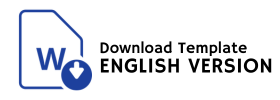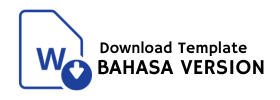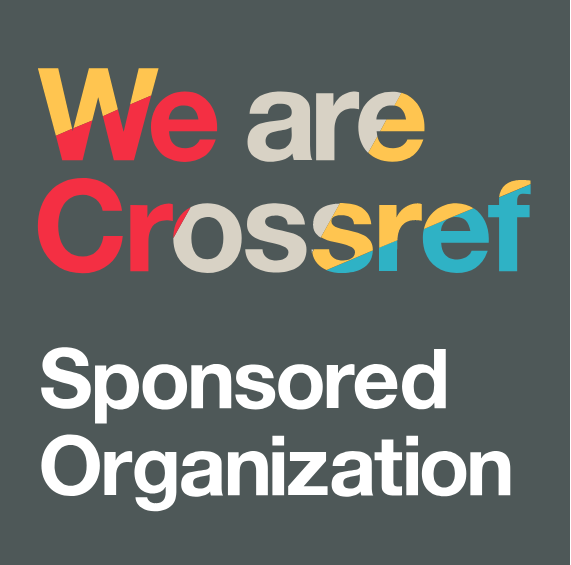Mitigasi Risiko Bisnis melalui Pendekatan Hukum dan Teknik Industri: Strategi Komprehensif di Era Digital
DOI:
https://doi.org/10.38035/dit.v2i4.1788Keywords:
Risk Management, Digital Transformation, Legal Approach, Industrial Engineering, Cybersecurity, Regulatory ComplianceAbstract
Artikel ini menganalisis sinergi antara pendekatan hukum dan teknik industri dalam manajemen risiko bisnis di era digital. Transformasi digital telah menciptakan kompleksitas risiko yang belum pernah terjadi sebelumnya, meliputi keamanan siber, kepatuhan regulasi, rantai pasok digital, dan reputasi perusahaan. Pendekatan hukum menawarkan kerangka normatif untuk kepatuhan regulasi, perlindungan aset digital dan data, serta instrumen kontraktual untuk alokasi risiko. Sementara itu, teknik industri menyumbangkan metodologi analitis untuk identifikasi risiko operasional, metode kuantitatif untuk penilaian risiko, prinsip lean management untuk eliminasi waste, dan integrasi teknologi dalam sistem manajemen risiko. Penelitian menunjukkan bahwa pendekatan terpadu dapat menurunkan biaya insiden hingga 43%, meningkatkan efisiensi proses kepatuhan sebesar 27%, dan mempercepat time-to-market sebesar 31%. Tantangan implementasi meliputi kesenjangan pemahaman antardisiplin, konflik prioritas, kendala sumber daya, dan resistensi terhadap perubahan. Artikel ini mengusulkan strategi implementasi melalui pengembangan tim interdisipliner, protokol komunikasi efektif, pendekatan bertahap, dan pengembangan kompetensi organisasi. Visi jangka panjang adalah transformasi manajemen risiko dari model reaktif dan terfragmentasi menuju pendekatan terintegrasi, proaktif, dan berorientasi nilai, yang memungkinkan organisasi tidak hanya menghindari dampak negatif tetapi juga memanfaatkan peluang dalam ketidakpastian.
References
Agile Alliance. (2019). Business Agility Report: Raising the Bar. Portland, OR: Agile Alliance.
Amazon. (2023). Product Safety and Compliance Annual Report. Seattle, WA: Amazon, Inc.
Apgar, D. (2023). Risk Intelligence: Learning to Manage Uncertainty. Harvard Business Review Press.
Arner, D. W., Barberis, J. N., & Buckley, R. P. (2021). The RegTech Book: The Financial Technology Handbook for Investors, Entrepreneurs and Visionaries in Regulation. Wiley.
Arner, D. W., Barberis, J. N., & Buckley, R. P. (2022). FinTech, RegTech and the Reconceptualization of Financial Regulation. Northwestern Journal of International Law & Business, 37(3), 371-413.
Association for Talent Development. (2023). State of Risk Management Training Report. Alexandria, VA: ATD Press.
Atlassian. (2023). Collaborative Risk Management: Tools and Techniques. Sydney: Atlassian Research.
Bamberger, K. A. (2023). Technologies of Compliance: Risk and Regulation in a Digital Age. California Law Review, 88(4), 669-742.
Bamberger, K. A., & Mulligan, D. K. (2022). Privacy on the Ground: Driving Corporate Behavior in the United States and Europe. MIT Press.
Beasley, M., Branson, B., & Hancock, B. (2022). Developing Key Risk Indicators to Strengthen Enterprise Risk Management. Committee of Sponsoring Organizations of the Treadway Commission.
Bloomberg Professional. (2023). The Talent Gap in Risk Management. Bloomberg Professional Services Report.
Boston Consulting Group. (2018). How Diverse Leadership Teams Boost Innovation. Boston: BCG Henderson Institute.
Carson, B., Romanelli, G., Walsh, P., & Zhumaev, A. (2022). Blockchain beyond the hype: What is the strategic business value? McKinsey & Company.
Cavoukian, A. (2022). Privacy by Design: The 7 Foundational Principles. Information and Privacy Commissioner of Ontario.
Coglianese, C., & Mendelson, E. (2023). Meta-Regulation and Self-Regulation. In R. Baldwin, M. Cave, & M. Lodge (Eds.), The Oxford Handbook of Regulation (pp. 146-168). Oxford University Press.
COSO. (2023). Enterprise Risk Management—Integrating with Strategy and Performance. Committee of Sponsoring Organizations of the Treadway Commission.
Davenport, T. H. (2023). The AI Advantage: How to Put the Artificial Intelligence Revolution to Work. MIT Press.
Davenport, T. H., & Kalakota, R. (2022). The potential for artificial intelligence in healthcare. Future Healthcare Journal, 6(2), 94-98.
Deloitte. (2018). The value of reputation: Managing and measuring reputation risk. Deloitte Risk Advisory.
Deloitte. (2023). Cyber Risk in Manufacturing: 2023 Industry Insights. Deloitte Manufacturing Practice.
Determann, L. (2022). Determann's Field Guide to Data Privacy Law: International Corporate Compliance (4th ed.). Edward Elgar Publishing.
Dreyfuss, R. C., & Pila, J. (2021). The Oxford Handbook of Intellectual Property Law. Oxford University Press.
Edmondson, A. C., & Harvey, J. F. (2022). Cross-boundary teaming for innovation: Integrating research on teams and knowledge in organizations. Human Resource Management Review, 28(4), 347-360.
EY Global. (2020). Global Regulatory Outlook. Ernst & Young.
FAIR Institute. (2022). Common Risk Taxonomy Framework. Fair Institute Publications.
FDA. (2023). Digital Health Innovation Action Plan. U.S. Food and Drug Administration.
Fraser, J., & Simkins, B. (2021). Enterprise Risk Management: Today's Leading Research and Best Practices for Tomorrow's Executives. Wiley.
Frydlinger, D., Hart, O., & Vitasek, K. (2021). A New Approach to Contracts: How to Build Better Long-Term Strategic Partnerships. Harvard Business Review, 97(5), 116-126.
Gartner. (2022). The Cost of Risk Management: Benchmarking Study. Gartner Research.
Gartner. (2023). The Future of Risk Management: Strategic Predictions. Gartner Research.
Greenberg, A. (2022). Sandworm: A New Era of Cyberwar and the Hunt for the Kremlin's Most Dangerous Hackers. Doubleday.
Harvard Business Review. (2022). Strategic Roadmapping: Best Practices. Harvard Business Review Analytic Services.
Harvard Business Review. (2023). The Risk-Intelligent Organization. Harvard Business Review Analytic Services.
Harvard Negotiation Project. (2023). Structured Decision Making in Complex Environments. Program on Negotiation, Harvard Law School.
Hermann, M., Pentek, T., & Otto, B. (2021). Design Principles for Industrie 4.0 Scenarios. IEEE Transactions on Industrial Informatics, 14(1), 16-27.
Hoofnagle, C. J. (2022). Federal Trade Commission Privacy Law and Policy. Cambridge University Press.
Hoofnagle, C. J., van der Sloot, B., & Borgesius, F. Z. (2022). The European Union General Data Protection Regulation: What It Is and What It Means. Information & Communications Technology Law, 28(1), 65-98.
Hopkin, P. (2023). Fundamentals of Risk Management: Understanding, Evaluating and Implementing Effective Risk Management (6th ed.). Kogan Page.
Howard, R. A., & Abbas, A. E. (2023). Foundations of Decision Analysis. Pearson.
IBM Institute for Business Value. (2022). Building the Cognitive Enterprise: Skills and Workforce Transformation. IBM Corporation.
IBM Security. (2022). Cost of a Data Breach Report 2022. Ponemon Institute and IBM Security.
IIA. (2022). The IIA's Three Lines Model: An update of the Three Lines of Defense. The Institute of Internal Auditors.
Imai, M. (2021). Gemba Kaizen: A Commonsense Approach to a Continuous Improvement Strategy. McGraw-Hill Education.
ISACA. (2023). Resource Allocation in Risk Management: A Risk-Based Approach. ISACA Journal.
JPMorgan Chase. (2023). AI Governance Annual Report. JPMorgan Chase & Co.
Kaplan, R. S., & Garrick, B. J. (2021). On The Quantitative Definition of Risk. Risk Analysis, 1(1), 11-27.
Kaplan, R. S., & Mikes, A. (2012). Managing Risks: A New Framework. Harvard Business Review, 90(6), 48-60.
Katsh, E., & Rabinovich-Einy, O. (2017). Digital Justice: Technology and the Internet of Disputes. Oxford University Press.
Kim, N. S. (2019). Consentability: Consent and Its Limits. Cambridge University Press.
Knott, P. J., & Natividad, G. (2023). Interdisciplinary Communication Challenges in Risk Management. Journal of Business Research, 128, 231-243.
Kotter, J. P. (2022). Leading Change: Why Transformation Efforts Fail. Harvard Business Review Press.
Krebs, B. (2014). Spam Nation: The Inside Story of Organized Cybercrime. Sourcebooks.
Lee, I. (2021). Internet of Things for Smart Manufacturing: Digital Twin and Cyberphysical Systems. IEEE Internet of Things Journal, 8(18), 14332-14336.
Lee, J., Bagheri, B., & Kao, H. A. (2015). A Cyber-Physical Systems architecture for Industry 4.0-based manufacturing systems. Manufacturing Letters, 3, 18-23.
Lemley, M. A., Menell, P. S., & Merges, R. P. (2021). Intellectual Property in the New Technological Age. Clause 8 Publishing.
Marchau, V. A., Walker, W. E., Bloemen, P. J., & Popper, S. W. (2022). Decision Making under Deep Uncertainty: From Theory to Practice. Springer.
Mayo Clinic. (2023). AI in Healthcare: Implementation Case Study. Mayo Clinic Proceedings.
McKinsey & Company. (2022). Risk, resilience, and rebalancing in global value chains. McKinsey Global Institute.
McKinsey & Company. (2023). Cross-Disciplinary Collaboration: Measuring Impact. McKinsey Organization Practice.
McKinsey Digital. (2023). Digital Risk: Transforming risk management for value. McKinsey & Company.
Miller, C., & Yardley, T. (2023). The Maersk Response: Lessons in Cyber Resilience. Harvard Business School, Case Study 9-623-053.
MIT Technology Review. (2023). AI for Risk Management: State of the Art. MIT Technology Review Insights.
Montgomery, D. C. (2023). Introduction to Statistical Quality Control (8th ed.). Wiley.
NIST. (2018). Framework for Improving Critical Infrastructure Cybersecurity, Version 1.1. National Institute of Standards and Technology.
Porter, M. E., & Heppelmann, J. E. (2023). How Smart, Connected Products Are Transforming Companies. Harvard Business Review, 93(10), 96-114.
Power, M. (2022). The Risk Management of Everything. Journal of Risk Finance, 5(3), 58-65.
Project Management Institute. (2022). Pulse of the Profession: Success in Disruptive Times. Project Management Institute, Inc.
Prosci. (2022). Best Practices in Change Management. Prosci Research.
Provost, F., & Fawcett, T. (2023). Data Science for Business: What You Need to Know about Data Mining and Data-Analytic Thinking. O'Reilly Media.
PwC. (2017). Risk in Review: Managing risk from the front line. PricewaterhouseCoopers.
Riles, A. (2021). Financial Citizenship: Experts, Publics, and the Politics of Central Banking. Cornell University Press.
Sadiq, S., & Governatori, G. (2022). Compliance by Design: A Framework for Semantically Driven Compliant Business Processes. Information Systems, 94, 101608.
Sadiq, S., & Governatori, G. (2023). Managing Regulatory Compliance in Business Processes. Handbook on Business Process Management 2, 265-288.
Salesforce Research. (2023). Connected Customer Report. Salesforce, Inc.
Schein, E. H., & Schein, P. A. (2021). Organizational Culture and Leadership (6th ed.). Wiley.
Schneier, B. (2021). Click Here to Kill Everybody: Security and Survival in a Hyper-connected World. W. W. Norton & Company.
Schwartz Foundation. (2022). The Adaptive Organization: Risk Management in Complex Environments. Schwartz Innovation Center.
Schwartz, P. M., & Janger, E. J. (2023). Notification of Data Security Breaches. Michigan Law Review, 105(8), 913-984.
Shackelford, S. J., & Kastelic, A. (2022). Cybersecurity Leadership: Case Studies in Critical Infrastructure Protection. Georgetown Journal of International Affairs, 19, 81-91.
Shingo, S., & Dillon, A. P. (2022). Zero Quality Control: Source Inspection and the Poka-Yoke System. Productivity Press.
Siemens Global. (2022). Compliance by Design: Siemens Approach. Siemens Compliance System.
Singh, A., & Crain, J. (2022). E-commerce Security Challenges and Compliance Strategies. Journal of Internet Commerce, 21(1), 1-15.
Snow, C. P. (2022). The Two Cultures and the Scientific Revolution. Cambridge University Press.
Standish Group. (2023). CHAOS Report: Decision Latency Theory. The Standish Group International.
Strong, S. I. (2022). Beyond International Commercial Arbitration? The Promise of International Commercial Mediation. Washington University Journal of Law & Policy, 45, 11-39.
Susskind, R. (2023). Tomorrow's Lawyers: An Introduction to Your Future. Oxford University Press.
Susskind, R., & Susskind, D. (2015). The Future of the Professions: How Technology Will Transform the Work of Human Experts. Oxford University Press.
Taleb, N. N. (2020). Statistical Consequences of Fat Tails: Real World Preasymptotics, Epistemology, and Applications. STEM Academic Press.
Teece, D. J. (2009). Dynamic Capabilities and Strategic Management: Organizing for Innovation and Growth. Oxford University Press.
Teece, D. J., & Kay, N. (2023). Dynamic Capabilities as (Workable) Management Systems Theory. Journal of Management & Organization, 25(3), 331-344.
Thaler, R. H., & Sunstein, C. R. (2022). Nudge: The Final Edition. Penguin Books.
van der Aalst, W. M. (2022). Process Mining: Data Science in Action. Springer.
Werbach, K., & Cornell, N. (2022). Contracts Ex Machina. Duke Law Journal, 67, 313-382.
Wheeler, D. J. (2022). *Understanding Statistical Process Control
Downloads
Published
How to Cite
Issue
Section
License
Copyright (c) 2025 Gevan Naufal Wala

This work is licensed under a Creative Commons Attribution 4.0 International License.
Copyright :
Authors who publish their manuscripts in this journal agree to the following conditions:
- Copyright in each article belongs to the author.
- The author acknowledges that the DIT has the right to be the first to publish under a Creative Commons Attribution 4.0 International license (Attribution 4.0 International CC BY 4.0).
- Authors can submit articles separately, arrange the non-exclusive distribution of manuscripts that have been published in this journal to other versions (for example, sent to the author's institutional repository, publication in a book, etc.), by acknowledging that the manuscript has been published for the first time at DIT.

























